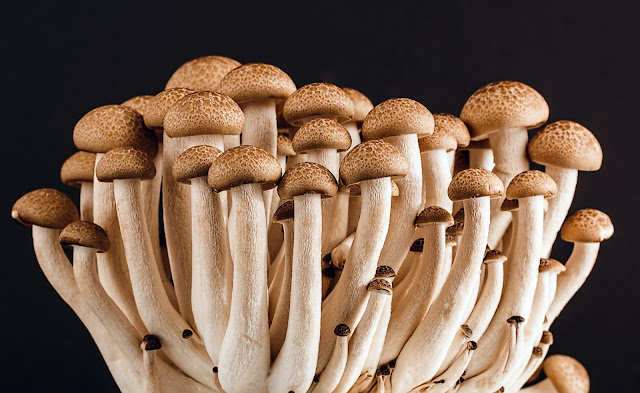Types of mushrooms
Mushrooms are not a plant they are fungi and, as such you do not grow them, so much as encourage them to spawn and develop. They like rotten old tree logs, dark damp unfriendly places and are particular fond of woodland. Some mushrooms are also poisonous, toxic, and very dangerous, others are hallucinogenic and a certain crowd calls them shrooms. Chefs around the world will hunt down rare and delicious mushrooms, and even the supermarkets now stock more than standard button and flat mushrooms. Varieties suitable for growing, either in your compost heap or in your hydroponic garden, are shitake, dark brown almost black mushrooms, a favorite in Chinese dishes; nameko or butterscotch mushroom, with a bright orange cap and a mild flavor popular in Japanese dishes; and oyster mushrooms, with almost a frilly cap, in the shape of an oyster shell and smells rather like aniseed. Also, suitable are lions mane, maitake, cinnamon cap, enokitake, and the button or Portobello mushroom, a standard in kitchens around the world. If you want to grow hydroponic mushrooms, you have an excellent range from which to choose.
How to grow hydroponic mushrooms
There are essentially two ways to grow mushrooms hydroponically; one is using a pre-populated "cake" the other is populating a growing medium with spores, the latter being more difficult. If you want to grow hydroponic mushrooms the easy way, buy a mushroom kit. This is a block of compacted straw-like material containing mushroom spores. You soak the block in water, cold and non-chlorinated, for a few hours and then put it in a dark place with the temperature ranging between 60ºF and 75ºF. If you are a hydroponic gardener you already have a suitable temperature controlled environment, but you must make sure it is dark. The spores become fungus and, so the mushrooms grow. It is best to keep the mushrooms watered with cold water as this makes them grow faster. If you want to try growing hydroponic mushrooms from scratch, then you need to grow your own mycelium, effectively the fine branching roots from which fungi grow. To achieve this, you can either use, a mushroom, cut up in pieces, a culture purchased from a culture bank or seeds. These are placed on a petri dish, kept in a dark place and the thread like mycelium will grow out of this. The mycelium is transferred to grain or seeds then spores are created, and after a few weeks fungus starts to develop and you have your mushrooms. All of this has to be done in a sterile environment as mycelium in the early stages is susceptible to bacteria. However at the end of all his, you have grown hydroponic mushrooms.
Uses of hydroponic mushrooms
Whilst it may seem obvious that people grow mushrooms to eat, a hydroponic mushroom farmer can sell rare mushrooms to restaurants where they will command a premium price. Some mushrooms have known medicinal properties and are dried and powdered to make medicines, so some are harvested and sent to health food companies. There are several uses for the less than humble hydroponic mushrooms.











This is not hydroponic mushroom cultivation. Hydroponics is dissolving the nutrients in water, and using a soilless medium. If you are growing on straw, this is regular mushroom cultivation.
ReplyDeleteCan you please explain how mushroom is grown hydroponically? I practice it the way he explained
ReplyDelete